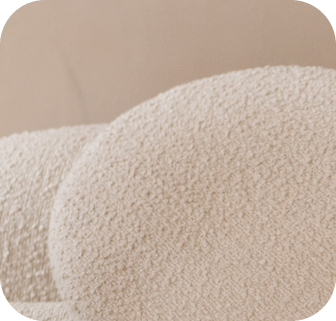
Nasal obstruction | Chicago Plastic Surgery Defined
 Nasal obstruction is a common complaint often termed stuffy nose, nasal blockage, and stopped up nose.
Nasal obstruction is a common complaint often termed stuffy nose, nasal blockage, and stopped up nose.
Nasal Obstruction
Nasal obstruction is a common complaint often termed stuffy nose, nasal blockage, and stopped up nose. The variety of terms are used when the nasal passageway is narrowed. It is critical to determine the cause of nasal passageway narrowness with a complete nasal exam.
Many of the causes of nasal obstruction are structural in nature. Dr. Anil R. Shah focuses on the anatomic causes of nasal obstruction including deviated nasal septums, narrowed nasal valves, septal perforation, and enlarged turbinates. There are many causes of nasal obstruction including congenital deviated septum, trauma, allergies, previous rhinoplasty.
Dr. Shah uses the latest in endoscopic and objective equipment in determining the cause of nasal obstruction. The endoscope allows for precise diagnosis of a specific cause of nasal obstruction while rhinomanometry can measure the nasal airway and help determine the “square footage” which is narrowed.
Anil R. Shah, MD, FACS, PC is an expert in the latest techniques in reconstruction of nasal valve surgery and improving the nasal airway. Many patients Dr. Shah sees have had previous surgeries by other surgeons and come to Dr. Shah for improvement in this arena. Dr. Shah is one of the few surgeons in the Chicago, and Chicagoland area who specializes in nasal obstruction.
Dr. Shah works in synergy with a variety of colleagues in order to provide the best possible care for his patients. Dr. Sanjay Patel focuses on the medical and allergic causes of nasal congestion and obstruction. There are over 250 medical causes of nasal obstruction and Dr. Patel meticulously sorts through the possibilities. Medical causes of nasal obstruction can range from thyroid abnormalities to taking birth control pills.
Recent Articles About Nasal Obstruction by Dr. Anil R. Shah
Did you know that over 80% of the population has a deviated septum? Why does this occur? Recently Dr. Shah headed up a team of researchers at NYU and found that deviated septums occur within the ages of 3-6 and did not occur earlier. “We looked at CT scans and MRI’s of newborns, toddlers, and adults to determine when does this deviation manifest itself. Interestingly, we found that the majority of deviations occurred within the toddler age. One theory of why this occurs could be because of incidental trauma to the nose during this developmental period.” This study was presented at the COSM in Orlando, Florida April 2008.
A septoplasty is often thought to be a routine surgery. However, this surgery has far more complexity to it than originally thought. Dr. Shah headed up a team of researchers at NYU and examined the effects of septoplasty on nasal tip projection. They found that even a standard removal of a small amount of cartilage could impact the nasal tip (nasal shape). It is important that patients realize that the shape of their nose can change and should have a surgeon experienced in septal surgery and nasal tip surgery performing their surgery.
What is the Nasal Swell Body and Why Is It Important?
A Nasal Swell Body is the recognizable framework of the anterior nasal septum. The NSB, a structure that can be seen with an endoscope during an examination, is comprised of septal cartilage, bone and mucosal lining. However, most facial plastic surgeons overlook the NSB during examinations and often confuse it for a high-deviated septum. In recent studies, some theorize that the Nasal Swell Body has an important role in regulating airflow in the nasal area as well as humidification.
The reason why facial plastic surgeons should pay close attention to the Nasal Swell Body is due to its role. The Nasal Swell Body located close to the distal segment of the internal nasal valve, contains irregular blood vessels, and is a common issue with patients with chronic sinusitis. It can also be traced to issues in patients with a deviated septum and rhinitis, which is an inflamed nasal mucous membrane due to a viral infection or allergies.
Internal Nasal Valve
Traditionally speaking the internal nasal valve is the smallest cross sectional area and is is made up of the caudal edge of the upper lateral cartilage and the septum and inferior turbinates. The normal angle is between 10-15 degrees.
External Nasal Valve
The external nasal valve is defined by the nasal ala, caudal septum, and the caudal edge of the lower lateral cartilages.
Lateral Wall Insufficiency
Lateral wall insufficiency describes the dynamic nature of the internal nasal wall and is divided into 2 zones. Zone 1 is located more cephalad (corresponds to internal nasal valve) and Zone 2 is located more caudal ( corresponds to external nasal valve
Are there any ways to objectively measure the nasal valve?
All methods are highly controversial and have not proven to always correlate with a patient’s symptoms.
- Acoustic rhinometry measures the dimensions of the nasal passageway. More than 500 studies have been published with acoustic rhinometry. It offers a static measure of nasal dimensions.
- High resolution CT can be used to calculate the dimensions of the nasal airway.
- Rhinomanometry takes into account airflow during inspiration.
- Peak nasal inspiratory flow looks for maximum airflow during outcomes
- NOSE scores are based on QOL or quality of life issues. These scores are based on patient’s subjective sensation of breathing.
So why are these measures controversial?
There is often a poor correlation between objective findings and measures of nasal patency and patient symptoms. Recently a large cross-sectional study of 290 subjects found no correlation between subjective and anatomic findings. Another study by Kjaergaard found acoustic rhinometry and nasal peak inspiratory flows correlated with subjective improvement in patient’s outcomes.
How much cartilage are you supposed to leave behind on a septoplasty with submucosal approach?
This is controversial and most surgeons state that 1.5 cm strut is sufficient for support to nasal tip and bridge. The real answer is much more complicated and depends on the preexisting nasal tip support as well as the strength of the actual septum.
Describe the physics of nasal flow
- Flow through a tube (used to mimic nasal airflow) is proportional to a radius of the fourth power.
- Static nasal valve collapse is an anatomically narrowed nasal valve region.
- Dynamic nasal valve collapse is caused by insufficiency of the lateral wall with inspiration.
background-image: url()
Una publicación compartida de Anil Shah MD (@shahaesthetics) el
What is paradoxical nasal obstruction?
Sensory causes of nasal obstruction can sometime have a paradoxical sense of nasal obstruction even when widely patent. Ways for patients to perceive nasal breathing:
- nasal cooling – found by Sullivan to help patients sense nasal airflow
- minty substances – found by several studies to increase sensation of airflow
- Ponaris or other mentholated substances – increase sensation of airflow
Causes of nasal valve collapse include:
- Aging
- Trauma
- Congenital causes
- Previous rhinoplasty
What is the spirolox implant?
Spirolox implant – The implant is made up of a 70:30 blend of poly(l-lactide) and poly(d-lactide) and is a ribboned cylindrical structure. It is placed through an endonasal delivery structure and lasts about 24 months. It is used to strengthen the external and internal valve and can form scar tissue over months to support it longer than the implanted device. In a recent study, no implant extrusion was found through the skin as well as any cosmetic disruption. It offers an alternate choice for patients who do not want to have a surgical procedure which can involve ear or rib grafting and allow for a rapid recovery. Although it will not address all cases of valve insufficiency, it may offer some patients an alternative to surgery.
What are some medical causes of nasal obstruction?
Acid reflux is often overlooked cause of nasal obstruction. Not all patients have heartburn, dysphagia or regurgitation. Frequent throat clearing and globus (feels like something stuck in throat) is more common. Typically patients with symptoms at night that improves during day may have reflux.
Smoking can have an effect on nasal mucosa. Smokers have a reduction in nasal cavity volume leading to a more constricted airway.
The nasal cycle is the fluctuation in breathing which occurs every 2-3 hours. Many patients who had this phenomenon will have an increased awareness after surgery.
There are many causes of nasal obstruction most commonly divided into 3 categories: Mucosal, Structural and Sensory
Common causes of mucosal, structural, and sensory nasal problems:
- Sensory causes
- Unreasonable expectations
- Trauma
- Atrophic rhinitis
- Empty nose syndrome
- Congenital idiopathic hypesthesia
- Mucosal causes
- Allergic rhinitis
- Atrophic rhinitis
- Nonallergic rhinitis
- Occupational rhinitis
- Environmental irritants
- Rhinosinusitis
- Gastroesophageal reflux
- Laryngopharyngeal reflux
- Tobacco abuse
- Nasal cycle
- Drug induced
- Inflammatory disorders
- Endocrine&metabolic disorders
- Pregnancy
Structural causes
- Internal nasal valve pinching External nasal valve narrowing and/or collapse
- Internally recurvate lateral crura
- Wide columella from short medial crura
- Septal deviation
- Deviated nasal bones
- Synechiae
- Septal perforation
- Turbinate hypertrophy
- Concha bullosa
- Nasal polyps
- Nasal tumor
- Adenoid hypertrophy
- Thick nasal vibrissae


